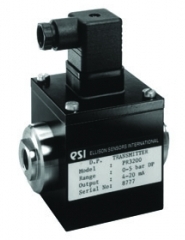Oct 15 2010
ESI is employing its silicon-on-sapphire (SOS) pressure sensing methodology to a broad range of intrinsically safe (IS) transmitters for utilization in highly-hazardous environments. The company offers numerous ATEX-certified IS SOS pressure transmitters which satisfies the EEXIA IIC T4 standards.
 IS SOS Pressure Sensors
IS SOS Pressure Sensors
The SOS technology was primarily deployed in extreme thermal circuits for the NASA space mission. By employing this unique technology, ESI has advanced a sensing device which can effectively monitor torque, vibration, pressure or force in high-thermal zones constantly. The main characteristic of SOS sensing device which dominates the other traditional silicon-enabled senors is that, it is resistant to various stresses that results during processing thereby ensuring high-quality operation.
The flexibility of the sapphire used in it helps bending the wafers and again confines it to its basic state and this recurrent phenomenon is highly exploited in such sort of sensing devices.
The SOS systems can be widely exploited in hazardous zones due to the security and long-life of such products encompassing differential, submersible, absolute, extreme pressure, precise, sterile and robust gas and oil transmitters.
Source: http://www.esi-tec.com